■1971 By adding a cargo box to the undercarriage of a combine harvester, Yanmar created the YFW500D, the world's first Tracked carrier. The YFW500D was powered by a Yanmar diesel engine and could transport materials on soft ground where trucks and dump trucks could not enter.
50th Anniversary of the Tracked Carrier and Major Models
April 13, 2021, Yanmar this year celebrates the 50th anniversary of the YFW500D, the world’s first tracked carrier equipped with a Yanmar diesel engine.
The original carrier used the undercarriage of a Yanmar rubber crawler combine harvester and added a cargo box to enable it to transport materials on soft ground. Created in 1971, the YFW500D was the world’s first tracked carrier. The carrier was the first in a long line of quality products from Yanmar developed to meet the needs of the times.
Yanmar, a pioneer in compact construction equipment, will mark the celebration of this 50th anniversary of the tracked carrier by renewing the company’s commitment to the development of high-performance products and solutions that offer premium reliability and value for customers. Through Yanmar’s contributions to urban development, including housing construction and infrastructure development, they aim to realize a society where everyone can live with peace of mind.
50th Anniversary of the Tracked Carrier and Major Models
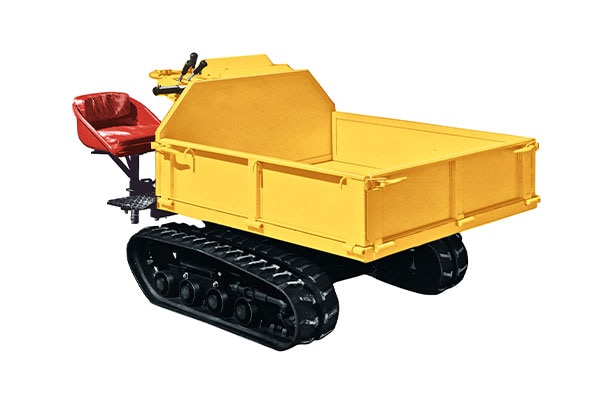 <YFW500D>
<YFW500D>
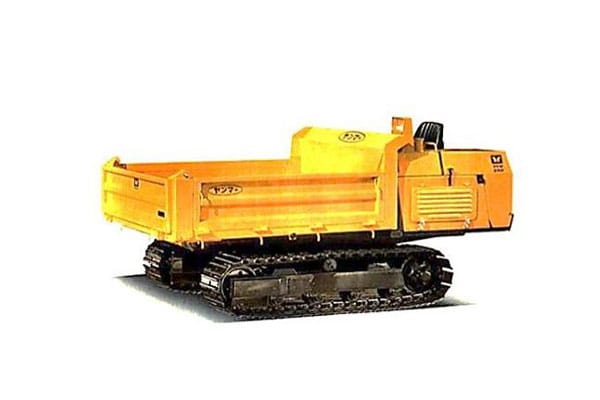 <YFW26D>
<YFW26D>
■1973 The YFW26D, had a large loading capacity of 3 tons and was equipped with a 17-horsepower Yanmar vertical water-cooled three-cylinder diesel engine that enabled it to run quickly on slopes. The tough steel crawler made it a favorite of worksites.
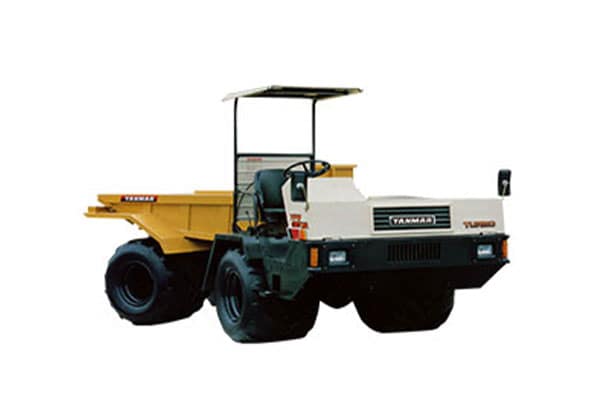 <YFW35WA>
<YFW35WA>
■1984 In the late 1970s, the market for wheel carriers was growing, and Yanmar launched the YFW35WA articulated wheel carrier. Equipped with super flat special low-pressure tires for soft ground, the 27 inch (700mm) wide, 38 inch (945mm) diameter tires were an unprecedented development among conventional carriers.
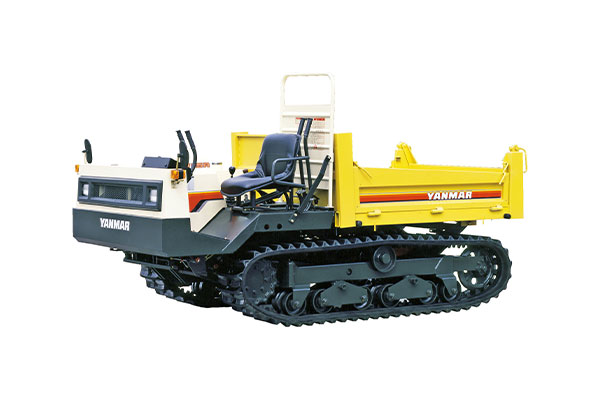 <YFW25R>
<YFW25R>
■1985 Yanmar developed a rubber crawler that achieved a speed of 11 km/h, about twice the speed of conventional crawlers. The high-speed YFW25R carrier was a hit product that also featured the industry's first reverse seat and was the prototype for the C30R model that is still sold today.
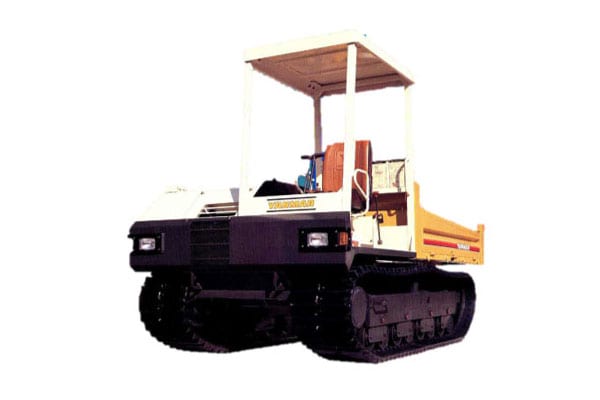 <YFW40R>
<YFW40R>
■1985 Equipped with a 64-horsepower Yanmar vertical water-cooled fourcylinder diesel engine, the YFW40R was launched in pursuit of not only running speed and power, but also comfort and used a large rubber crawler to reduce operator fatigue in a highly maneuverable HST. This model was the prototype for the C50R, which is still sold today.
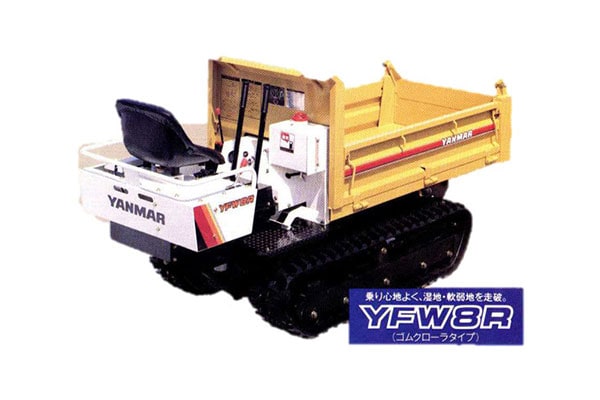 <YFW8R>
<YFW8R>
■1988 Yanmar released the YFW8R, a compact carrier with a width of only 950mm built tough to work hard on construction sites. Until the YFW8R, tracked carriers had their driver’s seats mounted to one side or the other. But with the YFW8R, for the first time in the industry, the seat was placed in the center making it easy to get on and off from both sides and provided better visibility. This model was the prototype for the C12R, which is still on sale today.
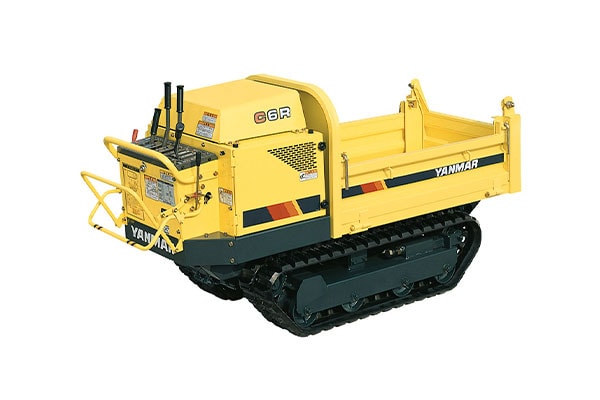 <C6R>
<C6R>
■1990 The C6R was a 790mm wide mini carrier specially designed for civil engineering and suitable for urban renewal in densely populated residential neighborhoods and narrow alleys. With the power and sturdy design of a construction machine, it was used for a wide range of tasks from civil engineering work to landscaping and forest road work in narrow areas where small pick-up trucks could not go.
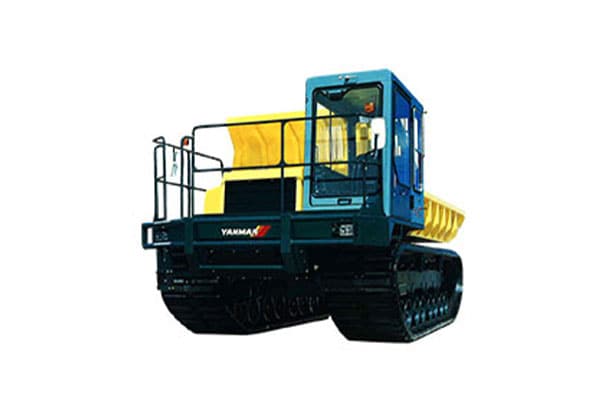 <C120R>
<C120R>
■1996 The largest Tracked carrier in Yanmar’s history, the C120R is a 240-horsepower, 11-ton load, large carrier that combines power and speed to meet the expectations of professionals. The C120R emphasizes strength, durability and operability from its basic structure through to every detail of the undercarriage.
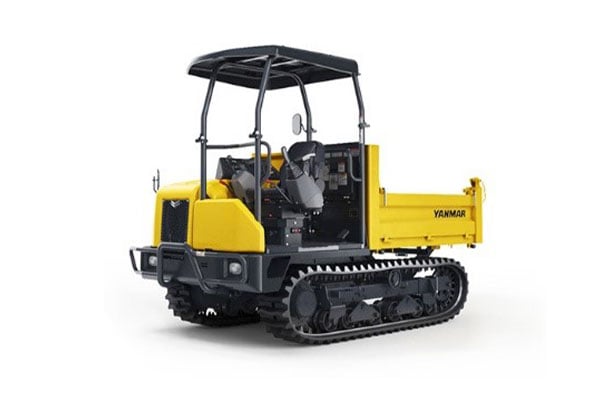 <C30R-3>
<C30R-3>
■2000s Yanmar launched a series of products equipped with environmentally friendly engines that met the strict emission regulations of Europe, the U.S. and Japan. Among them, the C30R-3 adopted a two-pump, two-motor hydraulic system, which enabled much smoother running and spin turns than before, and also incorporated the latest technology such as a GPS remote monitoring system.
<About Yanmar’s Compact Equipment Business>
Today Yanmar is a leading global player in the industrial machinery industry. In the construction equipment sector, Yanmar was first to market with the launch of the first mini excavator in 1968 and its invention of the revolutionary zero-tail excavator in 1993. Yanmar’s Compact Equipment Business has four plants, in Japan, France, Germany and the U.S., to deliver a range of products and services to the global market. For more details, please visit the official website. https://www.yanmar.com/global/construction/ https://www.yanmar.com/eu/
<About Yanmar>
With beginnings in Osaka, Japan, in 1912, Yanmar was the first ever to succeed in making a compact diesel engine of a practical size in 1933. A pioneer in diesel engine technology, Yanmar is a global innovator in a wide range of industrial equipment, from small and large engines, agricultural machinery and facilities, construction equipment, energy systems, marine, to machine tools, and components — Yanmar’s global business operations span seven domains. On land, at sea, and in the city, Yanmar provides advanced solutions to the challenges customers face, towards realizing A Sustainable Future. For more details, please visit the official website of Yanmar Holdings Co.,Ltd. https://www.yanmar.com/global/about/
